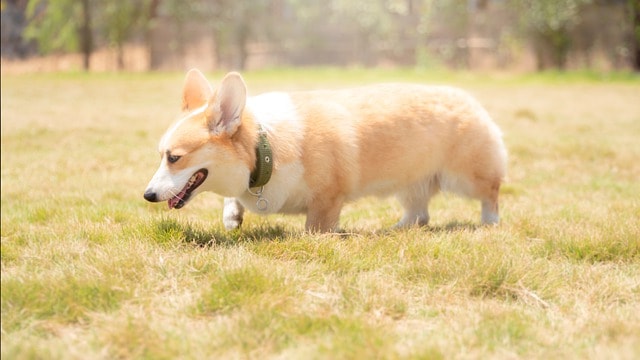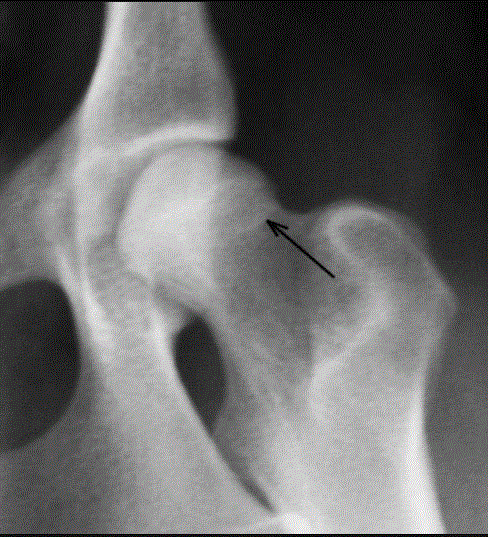The Pembroke Welsh Corgi is thought to have been in Wales about 1000 years ago and were highly acclaimed as excellent herders.
They generally worked on farms herding livestock, mostly cattle, killing rats and mice, and alerting farmers of intruders and predators with their loud, sharp bark.
Even small dogs are great cattle herders, as they can easily weave in and out of the cow’s legs efficiently and quickly.
Today, the adorable little Corgi is still used for herding in smaller numbers but excels as a wonderful, loving family dog. You may be considering adding a Corgi to your family but you’re wondering if they are a healthy breed.
In this post, we will delve into the subject of hip dysplasia and learn the signs of hip dysplasia in Corgis. Also included will be how to prevent hip dysplasia.

For your dog’s vitamin supplement, foods, toys, or other dogs product please visit the Health Extension website.
Can Corgis Develop Hip Dysplasia?
The very mention of hip dysplasia makes most pet parents cringe, especially those that own large breed dogs.
Hip dysplasia is more common in large-boned dogs such as the German shepherd, Great Dane, Labrador retriever, and Saint Bernard.
Being a condition of the skeletal system, this disease can also occur in smaller dogs and the Corgi is one that is prone to this condition
The Welsh Pembroke Corgi has a genetic trait that is known as achondroplastic dwarfism which has been passed down since the beginning of the Corgi’s existence and causes the normal-sized body on short legs.
This makes them more susceptible to developing hip dysplasia along with other spine issues. In Welsh, Corgi actually means “dwarf dog.”
To check your Pembroke Welsh Corgis’ health status or their DNA checks, please visit the Embark vet website for all the help you may need.

what is hip dysplasia in dogs?
Hip Dysplasia is a malformation of the hip joint, that occurs in some dogs as they grow. In normal function, the ball of the femur, or head of the thighbone, fits perfectly into the hip socket in the pelvis and moves smoothly.
When hip dysplasia develops, that ball of the femur is deformed, does not fit properly, and is in fact lose.
Hip dysplasia occurs most often in larger breed dogs, but the Corgi, being small in stature and having achondroplastic dwarfism is very prone to this as well as other small dogs such as pugs, basset hounds, and both French and English bulldogs.
This disease is most often genetic in nature but has some variables that can also affect its development and progression. These are exercise, rate of growth, muscle mass, the environment, and hormones.
The reason hip dysplasia is more common in larger breeds is because of heredity, but also if these dogs grow too large, too quickly, this can add much stress to still growing bones and joints, causing deformity.
If you add in perhaps, overfeeding your puppy, adding excess weight, and also too much strenuous exercise as a puppy (jumping, running, etc.), these also add undue friction and tension to joints and bones.
Unfortunately, hip dysplasia is one of Corgi’s most common health conditions, especially if they are over-fed and obese with an overabundance of vigorous exercise.

Signs of Hip Dysplasia in Corgis
Of course, you want your Corgi to be the healthiest they can be throughout their entire life, but unfortunately, that is not always the case.
Because hip dysplasia is mostly genetically based, if this is in their gene pool, they may develop hip dysplasia or it may skip a generation.
Corgis can develop hip dysplasia as young as 4 months. They may not have signs until they are older or symptoms may occur early on.
Veterinarians generally check all dogs, especially those prone to this condition at all wellness visits because although early treatment cannot cure hip dysplasia, it sure can help slow progression and keep your Corgi more comfortable as they age. X-rays ordered by your veterinarian can easily identify and diagnose hip dysplasia.
Signs of hip dysplasia that you can be on the lookout for in your Corgi are:
- Limping or hopping
- Lameness
- Weakness in hind legs
- Pain
- Stiffness
- Decrease inactivity
- Reluctance to play or go for walks
- Difficulty sitting, rising, running, getting onto furniture, or climbing stairs
- Grating and/or grinding of joint
Because this joint deteriorates gradually, there is no timeline as to how quickly it will progress or how severe it will become as well. Hip dysplasia usually progresses to degenerative joint disease and/or osteoarthritis.
How To Prevent Hip Dysplasia in Corgis
Preventing hip dysplasia can be a bit tricky because it is heredity-based. There is really only one way of prevention and this is still not a 100% guarantee.
The best way to ensure that you take home a healthy Corgi puppy is by selecting a reliable breeder.
This will entail doing some research and finding other owners that can give you a good referral on the breeder you choose. Speaking at length with your breeder about their practices and policies is essential.
A good breeder should screen all breeding dogs for most if not all genetic diseases that testing is available for.
Radiographs should be performed on all breeding dogs, as this is the best way to identify hip dysplasia. Those dogs who are diagnosed with hip dysplasia should not be bred.
Your breeder should readily allow you access to view your future Corgi’s parents and have access to all records.
Feeding your Corgi puppy a nutritious and healthy diet will not only help bones and joints but their whole overall health profile.
You do not want overweight or obese Corgi. This is detrimental to their bones, joints, and the health of every system in their body.
Exercise is another major contributing factor in the health of your Corgi but should be age-appropriate.
Although Corgis need exercise, as young puppies, exercise should be limited to short amounts, a few times a day.
Exercise like jumping, running and racing is too strenuous for your Corgi puppy’s still-growing bones and joints.
Because your Corgi has achondroplastic dwarfism, you really should be careful with your Corgi climbing stairs anyway.
Because of their short legs, stairs can be difficult to climb and even more difficult to come back down. This can cause injuries and aggravate hip dysplasia. Dog ramps are much more suited to this breed.
Treatments For Hip Dysplasia
There are several treatments for hip dysplasia and many help immensely, but again, early diagnosis is the key to a better outcome. Treatments can be found below.
- Physical therapy
- Water therapy
- Acupuncture
- Low impact exercise
- Weight reduction if overweight
- Supplements like glucosamine or chondroitin for inflammation and pain
- Non-steroidal anti-inflammatories (NSAID)
- Corticosteroids for inflammation and pain in oral form or as an injection
- Surgery (prognosis good if your Corgi is a good candidate)
As you have read, hip dysplasia can be a very crippling and painful disease if your Corgi develops it.
Using a reputable breeder to add a Corgi to your family is one of the best ways to try and ensure a healthy Corgi.
Being informed about the signs and symptoms is the next best step to take to get an early diagnosis and get your Corgi the best treatment plan for them if they should develop hip dysplasia.